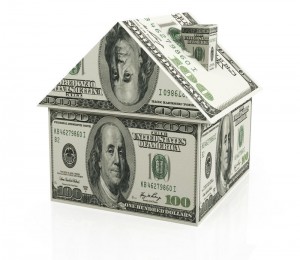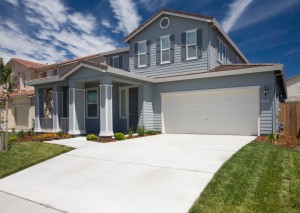Make It Work: Ideas for Squeezing a Little Extra Storage Out of Your Entryway

Your entryway is a tiny room (or maybe not even a room, maybe just a little spot next to the door) that does a lot of work. And now that it’s wintertime your entryway may be feeling the strain — all those coats and hats and gloves and bags and clunky winter boots and nowhere to put them. Here are a few storage ideas that will help you fit it all in — and make your entryway a little more welcoming and a little less chaotic.
Above: As this picture from Bolig proves, it’s possible to stash stuff even in a very narrow hallway. These folks used IKEA Trones shoe storage boxes, which are only seven inches deep, with oversized coat hooks above.

This hallway/entryway also makes use of wall mounted shoe storage boxes, but with a shelf mounted above to add even more storage. (The top shelf can be a little deeper because it’s above head height.) From IKEA via It’s a House.

Here’s an idea from the New York home of Ashlina Kaposta of The Decorista — mount a shelf above your doorway for extra storage.

A shelf mounted just above the floor means plenty of extra space for bags and shoes (and for a coat rack or oversized mirror above, too). Image from Char and the City.

If your home has a convenient nook like this one close to the door, you can turn it into an impromptu closet with a hanging rod. Decouvrir L’endroit du Decor

Place a second set of hooks a little lower on the wall for things belonging to the smaller members of the household, as seen on A Cup of Jo.

If your entryway is small and there isn’t a good spot for a coat rack, a freestanding hall tree could be a good solution. Image from Marie Claire Maison.

In a pinch, you can always hang a coat rack on the back of the door, as seen onFrench by Design.

Here’s a great example of using every inch of your entryway – a tiny space with a tall shelf with hooks for hanging, and a bench with even more storage underneath. From Kjerstis Lykke via Adventurous Design Quest.

No room to park your bike? Why not hang it on the wall? We’ve got a couple of roundups of wall mounted bike storage here and here. (It looks like these folks have also created an innovative system for keeping shoes off the floor, using what looks like bungee cords. Image from My Scandinavian Home.

No room for furniture in your entryway? Try a wall-mounted table like this one from Design Sponge.

This entryway from Julie Ansiau packs maximum storage with a shelf for shoes and not one but two coat racks.







